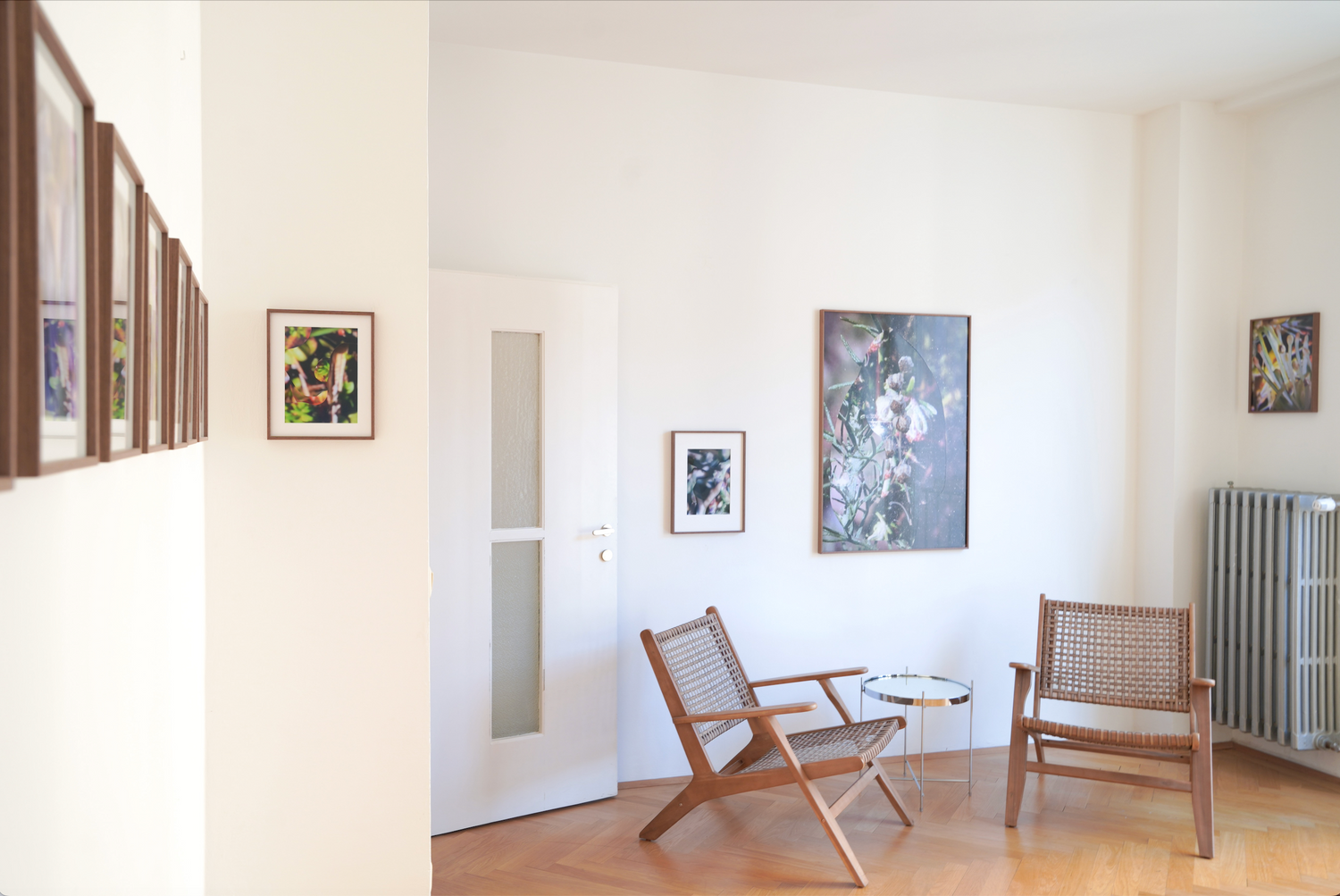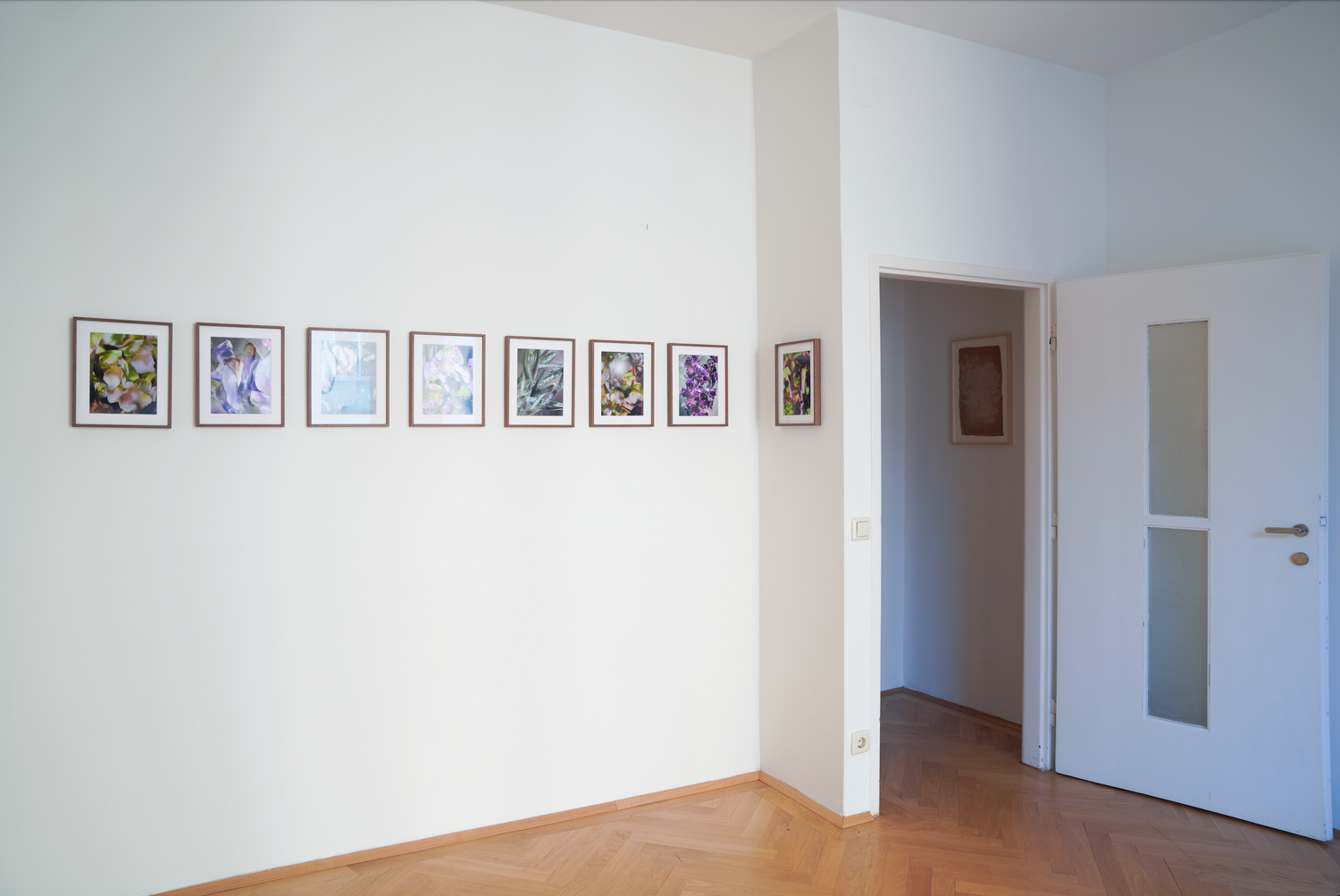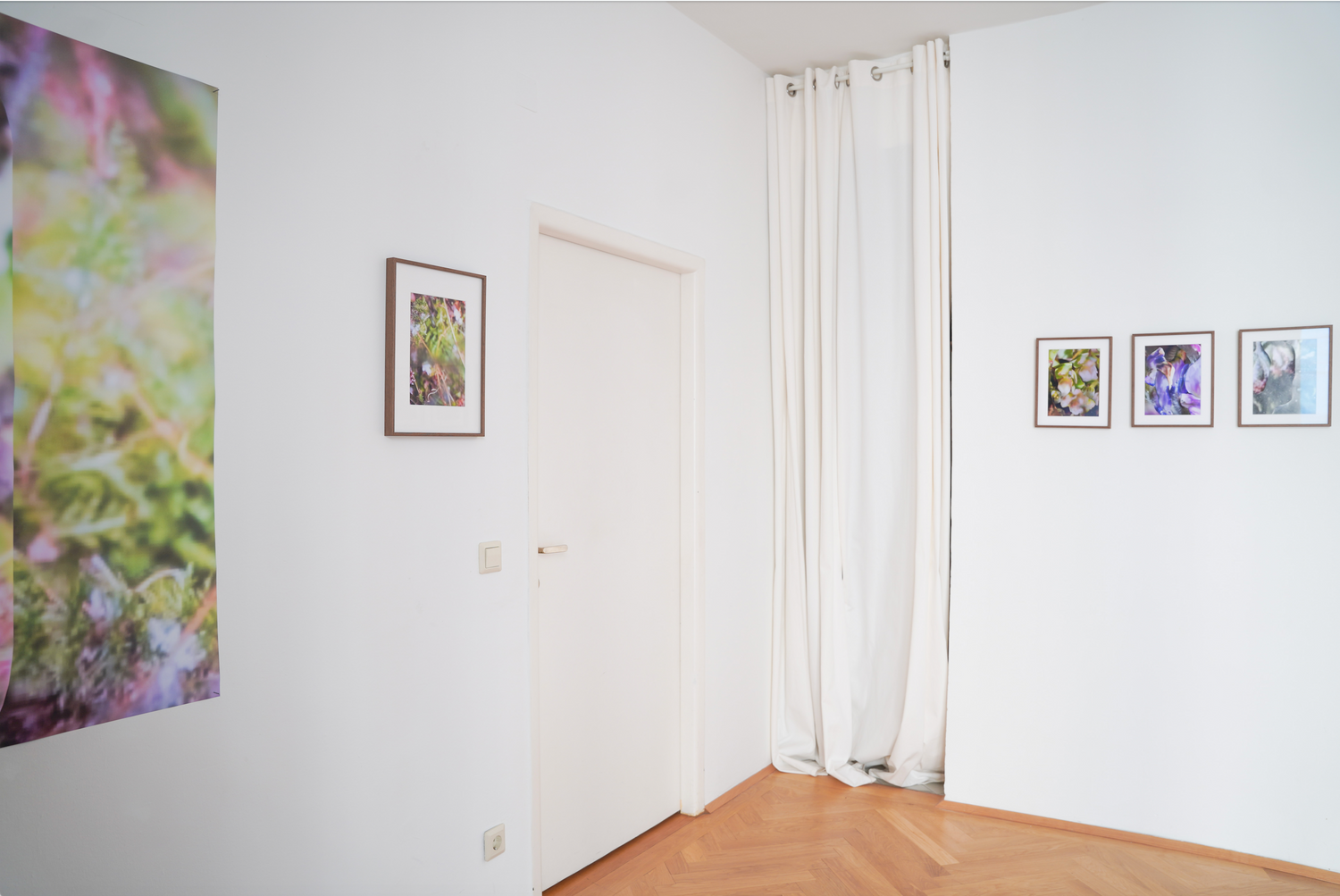Michaela Putz, Untitled, Turgenialatifolia, 2023
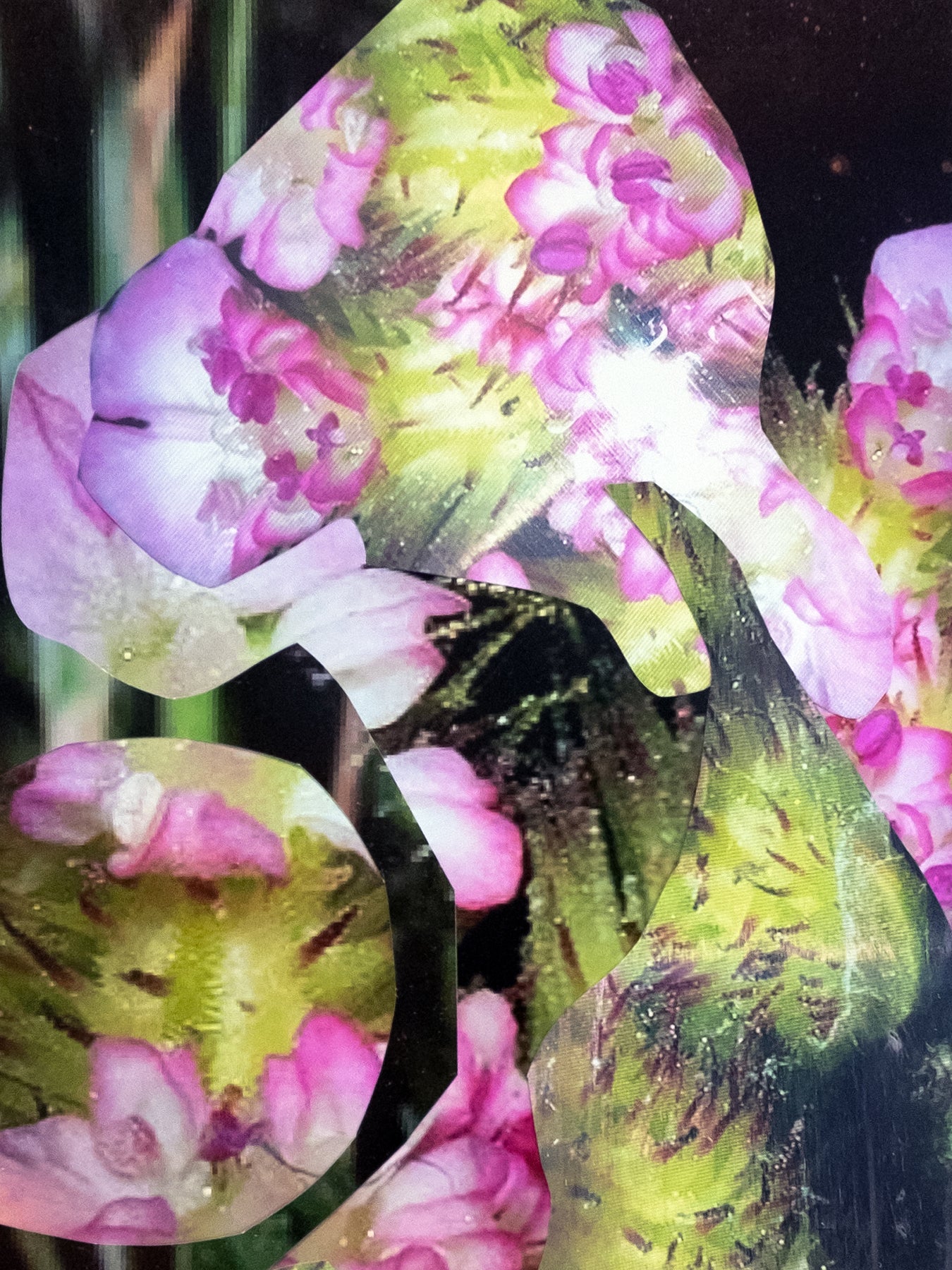
-
Michaela Putz
Michaela Putz studied at the University of Applied Arts (Master of Art&Science) and Communication and Political Science at the University of Vienna. In her multimedia work, she deals with the topics of found footage, archive and (future) memories in the context of digital alienation. Her current work also deals with the question of whether lost things can continue to exist digitally, as well as speculative future reproductions of the global extinction of species caused by human intervention. She expands the use of photographic images through (digital and analog) painting and also implements these in spatial installations and objects.Photo credit: Portrait photo Michaela Putz by Laura Sperl 2023
-

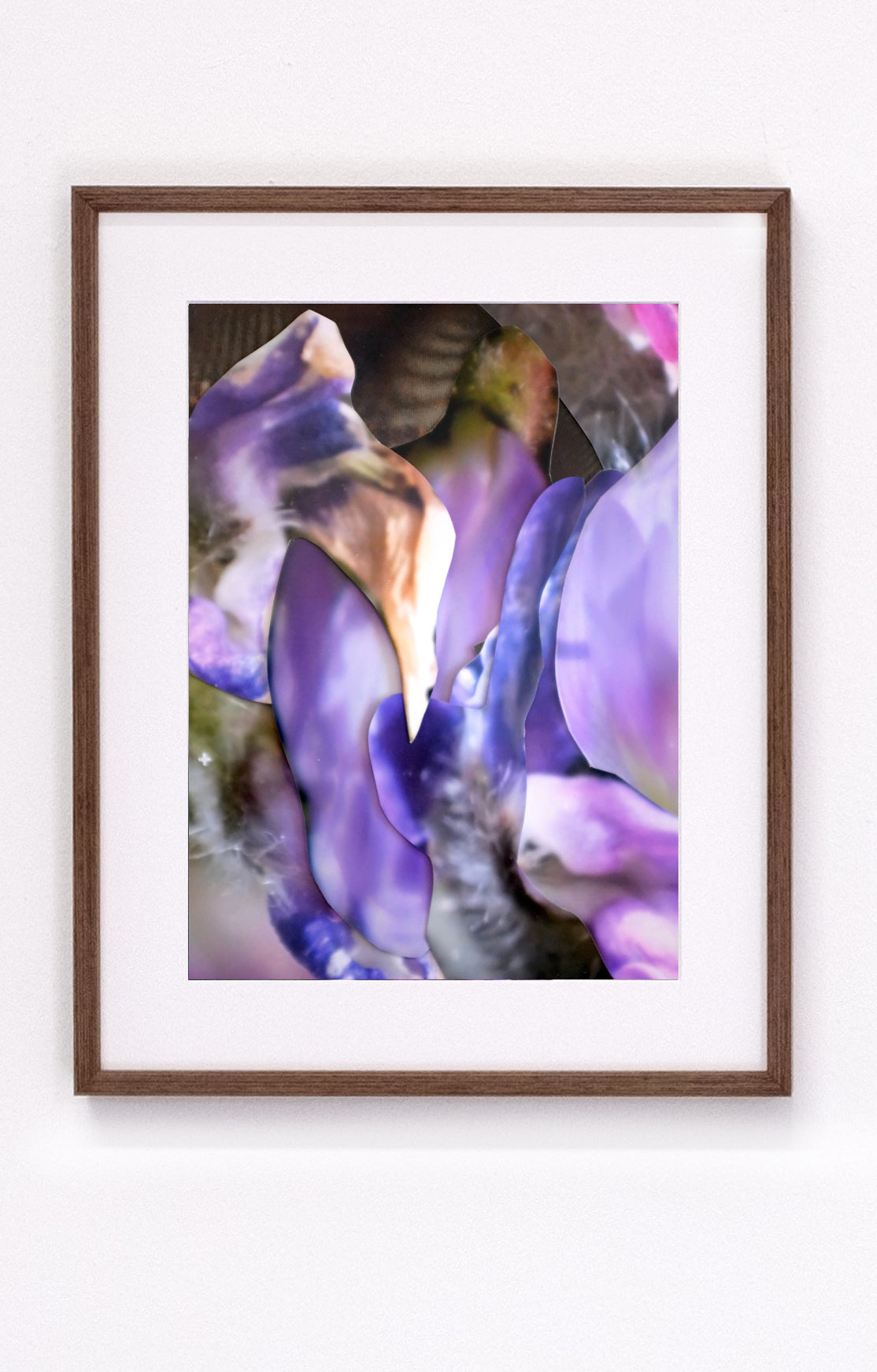
In cooperation with the Vienna Collectors Club
we are showing a selection of works by Michaela Putz.
FRAGMENTARY
From January 25 to March 17, 2024 - Tuesday to Thursday 12:00 - 17:00
Vienna Collectors Club
1010 Vienna, Herrengasse 6-8/2/7
List of FRAGMENTARY works >>>
In the COLLECTED series of works, Michaela Putz deals with the continuous extinction of the local plant world. The starting point for her artistic research is the Red List of ferns and flowering plants
Austria. The artist exposes photographed image data from screens as C-prints, crops them and creates new forms, sometimes following the
outlines of flowers, other times creating her own organic creatures.
Residues on the screen, cursors or deliberate blurring are part of these works, which enter the photographic archive of humanity anew as floral collages. The real world disappears, what remains are digital image files, whether real images or artistically alienated, posterity will ultimately have to find out for itself.
Text by Birgit Laback on the exhibition >>>
The Vienna Collectors Club is an art association with the aim of supporting and promoting emerging artists by creating a platform for exchange and communication with a local network of collectors.
"Chambre d'Amis" concept
The interventionist and installative presentations, which correspond to the medial and conceptual diversity of artistic approaches, follow in a modified form the idea of the "Chambre d'Amis", the showing of art in rooms with a semi-private character, in a room for guests, residents (Hochhaus Herrengasse), friends or colleagues.
This theme is about spaces that were not specifically designed for art, but can be seen as places where personal encounters with art can be seen as part of social life, where direct exchange about art is promoted in small circles and the connection between art and life is consolidated in this way.
Illustration: Michaela Putz, Untitled (Turgenia latifolia), 2023

Birgit Laback
With Fragmentarium, the Vienna Collectors Club's current exhibition shows works from the Collected series by artist Michaela Putz. Putz searches digital image archives (1) for images of endangered plants or plants that are already extinct in Austria. The selected image data is then processed and photographed from the user interface of the screen or cell phone and exposed as C-prints. Thus, not only the actual motifs, but also the surfaces of the means of communication used, on which the artist scrolls, wipes or partially zooms into the motif (including their condition - including scratches, dust, fingerprints - as well as the flash light hitting them), but also their control elements, which the artist uses during her work, are incorporated into the finished artwork.
In addition to these found footage materials, the Collected series includes "blank" sheets of paper from the herbarium of the Botanical Department at the Natural History Museum in Vienna, on which rare plants had been dried and pressed and which later had to be replaced and now only capture traces or indications of the plants once preserved here. In this way, Putz explores themes such as archive, memory/forgetting, image/reproduction as well as the appropriation of information in the digitalized world.
Pixels, cursors and the materiality of the user interface itself thus also become part of her images; the otherwise invisible is constantly visualized. At the same time, the artist also illustrates her own artistic practice, with which she examines the structures that make up modern existence. In terms of content, however, she refers less to the archival than to processes of human memory and its processual, changeable structure. By approaching her works - only seemingly unsystematically, constantly searching or changing or adapting - Putz works like memory. This "...proceeds in a fundamentally reconstructive way: it starts from the present and thus inevitably leads to a shift, deformation ... revaluation, renewal..." (Aleida Assmann, Memory Spaces, 2018, 29). The digital as well as manual manipulations/interventions of the artist, which occur when unlocking, swiping or zooming in on the user interface, become painterly gestures and produce new creations based on the traces of the original image or natural templates. In Putz's work, past and present collide and are condensed into a single image. The artist always strives for multi-layeredness and complexity. Oscillating between different working methods and discourses, she generates a subtly interwoven system of overlapping narratives.
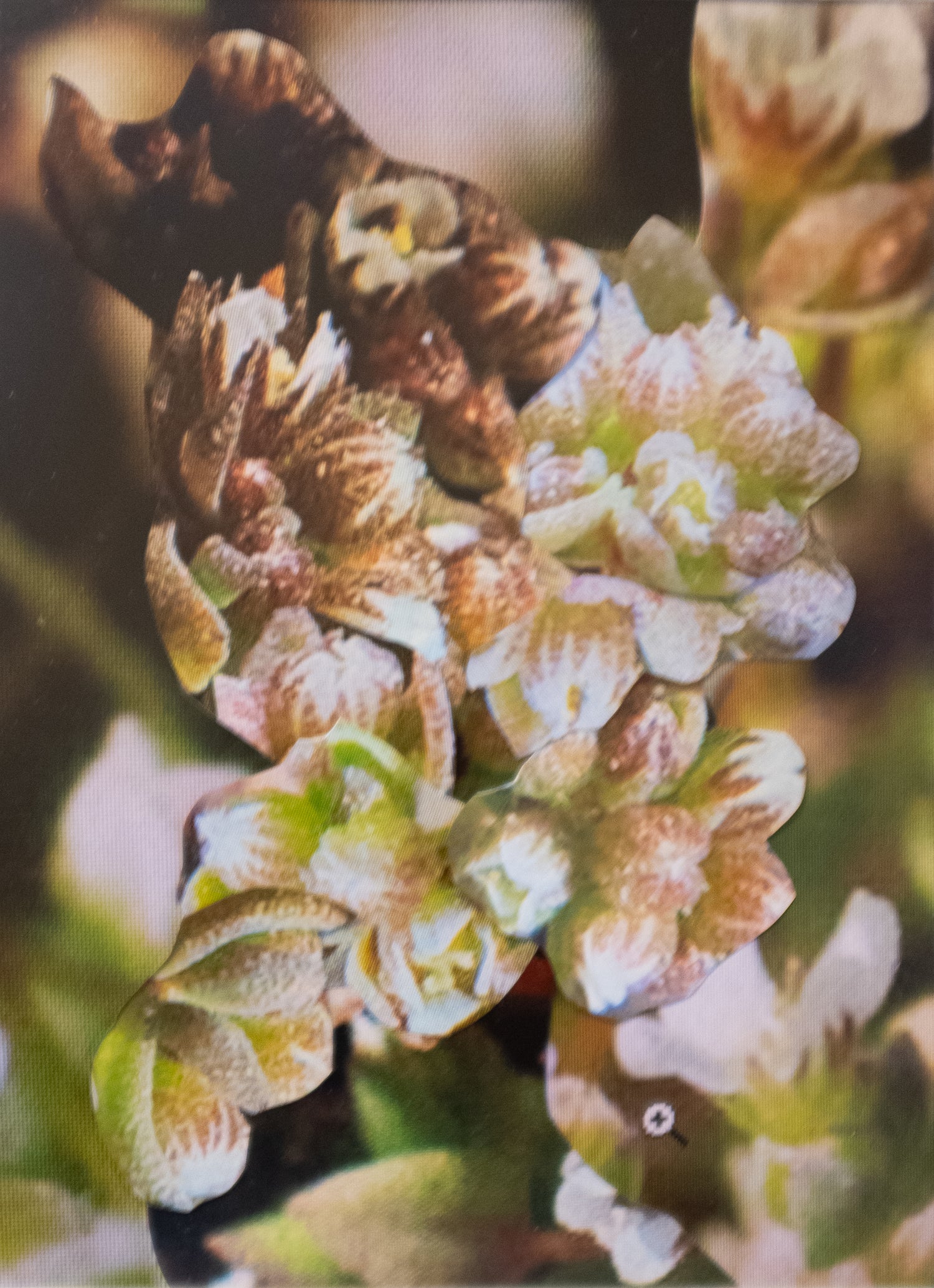
Alexander Galloway stated in 2012 (A. Galloway, Software Takes Command, 2012) that the computer had radically broken with the definition of media (as a window to the world). (2) Strictly speaking, the interface always acts as a transition point/friction surface between the media layers - as a kind of gateway that opens up and enables the transition to another place. As an interface, the display/graphical user interface marks the boundary between technology and the environment by constantly juggling and mixing the two worlds. Above all, however, software allows us to act with the help of machines. Because the interface is not a thing, but a practice! The digital makes us - in contrast to the consumerist passivity of a museum visitor, for example - active users. However, the more devices erase their own functionality, the more effective they are. In a way, an interface is therefore only an interface if it is invisible. Basically, Putz's works are above all a meditation on the interface itself.
After exposure, the artist reworks the C-prints - this time manually - by cutting out individual sections and reassembling them. Putz's pictures therefore no longer reproduce reality, instead they absorb its set pieces, as it were, and present them anew, transformed as it were. (Roland Barthes would speak of simulacrum.) Images are created that resemble the originals but do not copy them, but refer to discourses that go beyond them.
(1) The social mission of archives lies in the "conservation, organizing and indexing function" of material remnants of past epochs to which we have lost the immediate connection, "that which has become obsolete and alien" (Cf. Aleida Assman, Archive im Wandel der Mediengeschichte, 2009, 173 and 137)
(2) At the same time, Klaus Honnef explains that a photograph per se can never be a mere "duplicate" of what is photographed, but must always be understood as a sign, as an "abstraction derived from perception". (Honnef, Kunstforum International, vol. 41, 1980, 210)
Exhibition views - Anna Ignatovich, Courtesy Vienna Collectors Club
